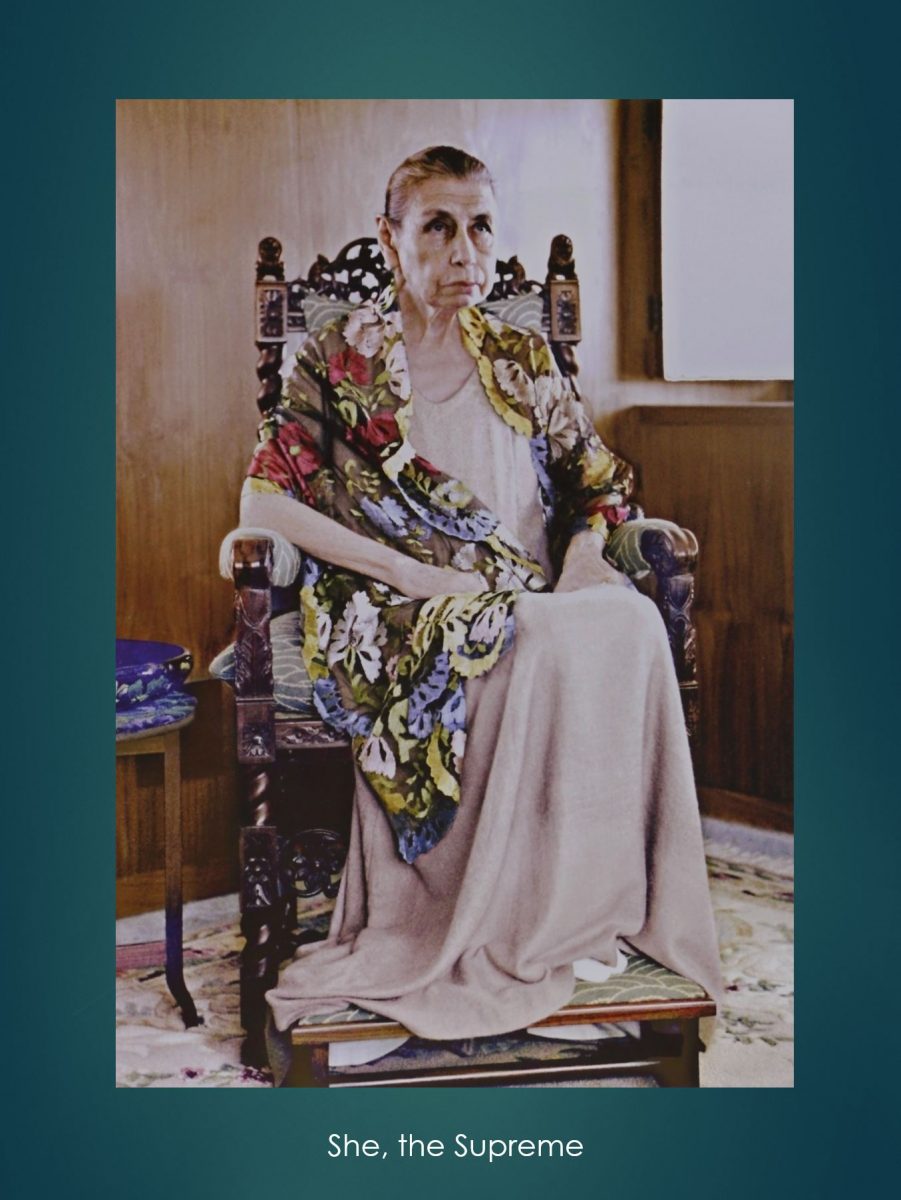“Here is a little story: one of my friends had made a trip to India and was requested to give an account of his travels. An old very credulous lady was there and she asked him, ‘In India, do they count the souls?’ He answered, ‘Yes.’ ‘How many are there?’ asked the old lady. He answered, ‘One only.’”[1]
This humorous story which the Mother once told her disciples serves well to form the opening of our book. Even though the Soul may be one everywhere, it is so in a special way in India which has a high spiritual mission on Earth. And thus it happened that a small town in the South-East of this blessed country was chosen to be the place where a formidable evolutionary experiment would be undertaken, aiming at a most explicit One-ness or Unity – not however a uniformity which exists by suppressing variety was to be sought for, but an infinitely wide and comprehensive consciousness which takes up in itself, assimilates and furthers all manifestations of multiplicity without losing itself in the process. Sri Aurobindo, India’s great revolutionary, poet, thinker and yogi of the 20th century, called this new consciousness the supramental consciousness and dedicated his life to its realization and manifestation. The Mother, Mirra Alfassa, was his spiritual collaborator. She had taken charge of the Sri Aurobindo Ashram in 1926 and guided its growth and development in all details. She initiated the disciples into the new consciousness which Sri Aurobindo was bringing down on earth, and she founded the International Centre of Education so that children might literally breathe-in the yoga from the Kindergarten stage and grow, by way of playing as it were, into the new life. And it was she who founded Auroville, the City of Dawn, where Sri Aurobindo’s high ideal was meant to be realized for the first time in the wider scope of a township.
The Mother was a phenomenon without parallel. Great yogis kneeled down before her and saints sat at her feet. Politicians became like children in her presence, or ran away, if they could not bear her Truth-Force. To children she was the Mother, to sadhaks a guru as well and to seekers a guide of rare wisdom and vision. To the hostile forces she was an inexorable warrior: we know today, from some of her writings, to what attacks and ordeals she was exposed. And yet she refused to play the role of a martyr. ‘If you can always smile at life,’ she wrote once, ‘life will always smile at you.’
Sri Aurobindo left his body more than three decades ago, and the Mother one decade ago. And yet their living presence is there and inspires many disciples to continue the work that was initiated by them. Every visitor at the Sri Aurobindo Ashram can observe on the Mother’s birthday thousands of devotees passing through her room in an endless line from early morning until noon, making pranam before her bed. For all of them the Mother continues to be there and she is felt helping, guiding and protecting.
If in the following pages we give many data on the outer life of the Mother, since they are of interest from the viewpoint of our searching intelligence, it should not divert the mind from the proper purpose of such a writing: to point towards the timeless ever-living Mother of the Universe, her Power and Love, which are felt if we turn towards her.

“I am not eager to be the Guru of anyone. It is more spontaneously natural for me to be the universal Mother and to act in silence through love.”[2] We believe that nothing could better characterize her being than these few words from her own pen.
[1] Nilima – Glimpses of the Mother’s Life 1:101
[2] Nilima – Glimpses of the Mother’s Life 2:113



About Savitri | B1C1-09 Advent of the Divine Mother (p.4)